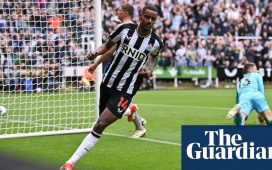With a Bruno Fornaroli-shaped cat out of the bag and a World Cup on the line, Graham Arnold stated what seemed like the bleeding obvious but also happened to be true.
“If you look at what Bruno Fornaroli’s done for Australian football as a foreigner over the last … seven to eight years, he’s always been consistently one of the best strikers in the league,” the Socceroos manager said.
“With his goal-scoring ratio of a goal every two games, he brings great quality. But on top of that he brings a South American mentality, and that is fight ‘til you drop. He brings experience [and] because of that, these two games will not affect him at all.”
The two games in question are against Japan and Saudi Arabia. They are games Australia must win, and the selection of Socceroo #617 carries a hint of desperate measures for desperate times.
Fornaroli’s call-up is both a brilliant personal story and a dispiriting reflection of Australia’s paucity of depth. The two do not have to be mutually exclusive, though it feels incongruous nonetheless.
In 2015, when he arrived in Australia, the little-known journeyman had long said goodbye to representing Uruguay at the senior level, having failed to progress from the under-17s. Even first-team football was hard to come by – over the course of some eight years he made little more than 120 appearances hopping around on loan from Sampdoria and then to Greece and back to South America.
In the seven years since, Fornaroli has scored 81 goals from 138 games for Melbourne City and Perth Glory. He has become a cult hero to supporters of those clubs and even neutrals admiring his on-field zeal and off-field candour. In 2016 he skippered City to the FFA Cup trophy, won the Mark Viduka medal in the final and finished his victory speech by accidentally shouting “and fuck off” instead of “vamos”.
The lost-in-translation moment encapsulates endearing qualities a country can get behind. On form alone, his selection also makes sense. While his scoring rate has slipped since his 25-goal golden boot season of 2015-16 for City, he still has seven from 14 games for Perth so far this campaign and, at two years older than teammate Daniel Sturridge, possesses a body in better nick.
If a relatively sure thing in front of goal is available, why not use him? Arnold is under pressure. He knows the Socceroos must beat both Japan and Saudi Arabia to qualify directly for Qatar 2022 or be slung straight into the Asian and intercontinental play-offs.

The manager will be without a number of regular attackers for this critical window, with Riley McGree, Adam Taggart and Nikita Rukavytsya to miss both games and Jamie Maclaren only available for the Japan fixture before leaving camp to get married.
The obvious caveat is that Australia’s national team should not find itself in the position of needing to cap a 34-year-old, especially at this stage of a World Cup cycle. In essence, the decision – while arguable the correct one – constitutes another stop-gap to paper over a much deeper crack.
The player-production-line narrative is a path well-trodden in this country, where player development pathways have been blocked by lack of appropriate infrastructure, or money, or pure ineptitude mired in petty politics.
As Ange Posecoglou said last month: “The signs have been there for a while that the rest of Asia is improving and we’ve kind of stalled in our development.”
Two years ago Viduka was also worried, lamenting “there’s a big gap in terms of player development, I think that’s a big problem – I think we’re not producing players like we used to”.
The concerns stretch further back in time than this, and yet the same problems present themselves each window when one position or another is rendered bereft by the absence of one or two key players.
Compounding the issue is a tendency by A-League Men clubs to sign imports as their starting forwards, leaving few opportunities for locals to break through. The swift rise of Alou Kuol at the Central Coast Mariners en route to VfB Stuttgart was a welcome antidote.
Still, foreign-born players can be a valuable asset. Scotland-born pair Harry Souttar and Martin Boyle have excelled in green and gold, albeit at the ages of 23 and 28 respectively.
Fornaroli for the Socceroos could be a stroke of genius. If the team end up in a Conmebol play-off against Uruguay – a not-impossible prospect – it could make for an intriguing conflict of interest. And if this naturalised Australian conjures something from nothing over the next two weeks, as he is inclined to do, he may save his new nation from the embarrassment of missing a World Cup for the first time in 16 years.














